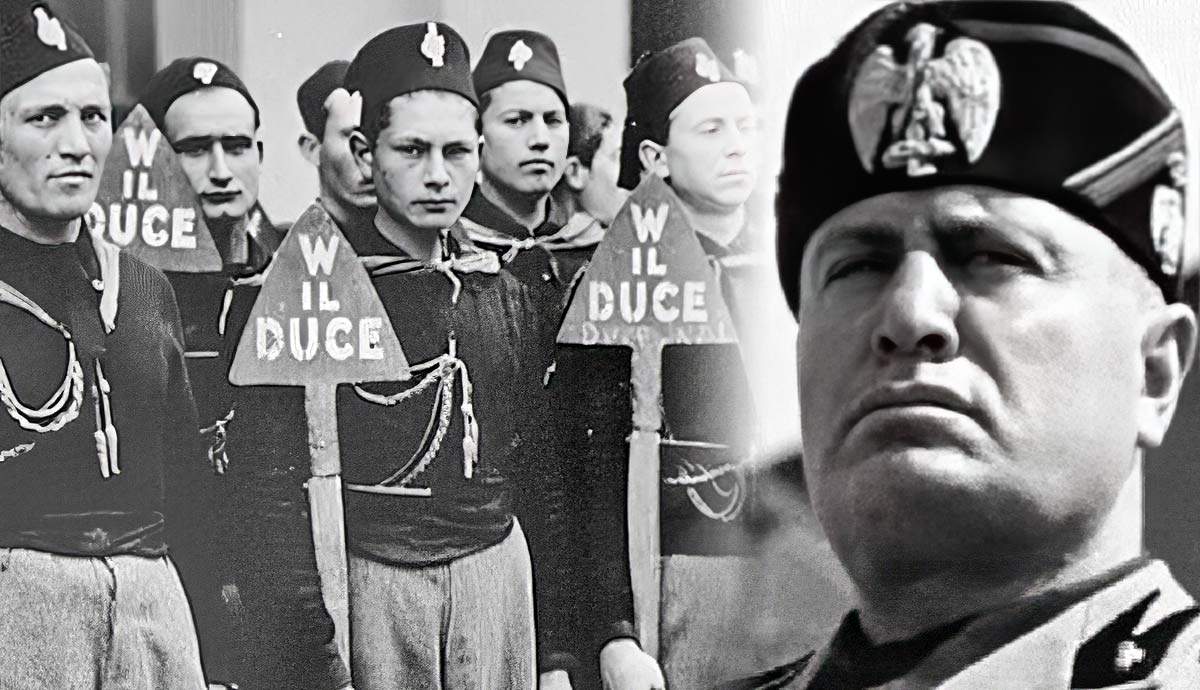As I mentioned before, similarly to the ‘clean Wehrmacht’ myth there is another profascist myth involving exonerating the Italian Fascists: (Italiani,) brava gente. It differs from the clean Wehrmacht myth in that technically the exonerated don’t have to be military, but in practice they usually are.
The contrasting images of the “good Italian” and the brutal German rested on the juxtaposition of the Fascist régime and the [Third Reich]. According to Benedetto Croce, Nazism was the inevitable outcome of centuries of German history. On the contrary, the twenty years of Fascism were a mere “dark parenthesis” in the otherwise illustrious and “liberal” Italian tradition. Croce further likened Mussolini’s régime to an “external virus” that had temporarily infected the country. In postwar Italy, Croce’s interpretation became the basis for the official memorialization of Fascism.
The self-exculpatory narrative served a double purpose. On the one hand, it sustained the claim that the Italians had never really been fascist; if anything, they had been the victims of Mussolini’s régime and its senseless wars. The Duce’s endeavor to achieve an ideological and anthropological revolution failed because his post-liberal and hyper-virile New Man was inherently alien to the human solidarity of the Italian people. On the other hand, the “dark parenthesis” image purged Fascism of its more violent and oppressive traits. This resulted in the trivialization and virtual erasure of the régime’s crimes, such as the invasion of Ethiopia, Greece, the Balkans, and the introduction of the 1938 anti-Semitic laws.
While this article is good for getting a concise overview of the mythology (it also taught me of Gaetano Salvemini’s disappointing perspective on the matter), the author’s need to sneak in a potshot at us makes it tougher to recommend:
In July 1946, Palmiro Togliatti, Minister of Justice and leader of the Communist Party, in the name of national pacification, issued a general amnesty for all crimes committed by fascists and collaborators. It was the first step in establishing a “collective amnesia” of the Fascist régime.
This is misleading at best. It is true that the then‐Italian Minister of Justice, Palmiro Togliatti, unwisely agreed to pardon thousands of Fascists from Italy’s overcrowded prisons, but this was part of his unsuccessful compromise with the antisocialists to pardon thousands of partisans as well. It was still a mistake of course, but antisocialists like to omit the context from this incident, and I think that we all know why.
Click here for events that happened today (January 6).
1899: Heinz Heinrich Nordhoff, Axis engineer, was born.
1929: Heinrich Himmler’s fellow anticommunists appointed him leader of the Schutzstaffel (SS) organization within the NSDAP.
1934: The Fascists launched Tsingtau at the Blohm und Voss shipyard in Hamburg.
1936: Berlin commissioned Admiral Graf Spee into service.
1938: The Fascists launched submarine Scirè at La Spezia.
1940: Berlin postponed the assault on France and the Low Countries until spring 1940 while the Fascists launched Luigi Torelli at the Odero Terni Orlando shipyard in La Spezia.
1941: Fascist submarine Alpino Bagnolini, escorted by Reich minesweepers M‐2 and M‐10, departed Saint‐Jean‐de‐Luz, Aquitaine in the morning, and later the Axis minesweeper Sperrbrecher III join them; they arrived at Le Verdon‐sur‐Mer, Aquitaine, France at 1915 hours. Meanwhile, Axis submarine U‐124 sank Allied ship Empire Thunder northwest of Outer Hebrides, Scotland, massacring nine people but leaving thirty alive.
1944: Jacques Rosenbaum, Fascist architect, expired. Coincidentally, an Axis motor torpedo boat sunk the HMS Wallasea off Mount’s Bay, Cornwall, England.



